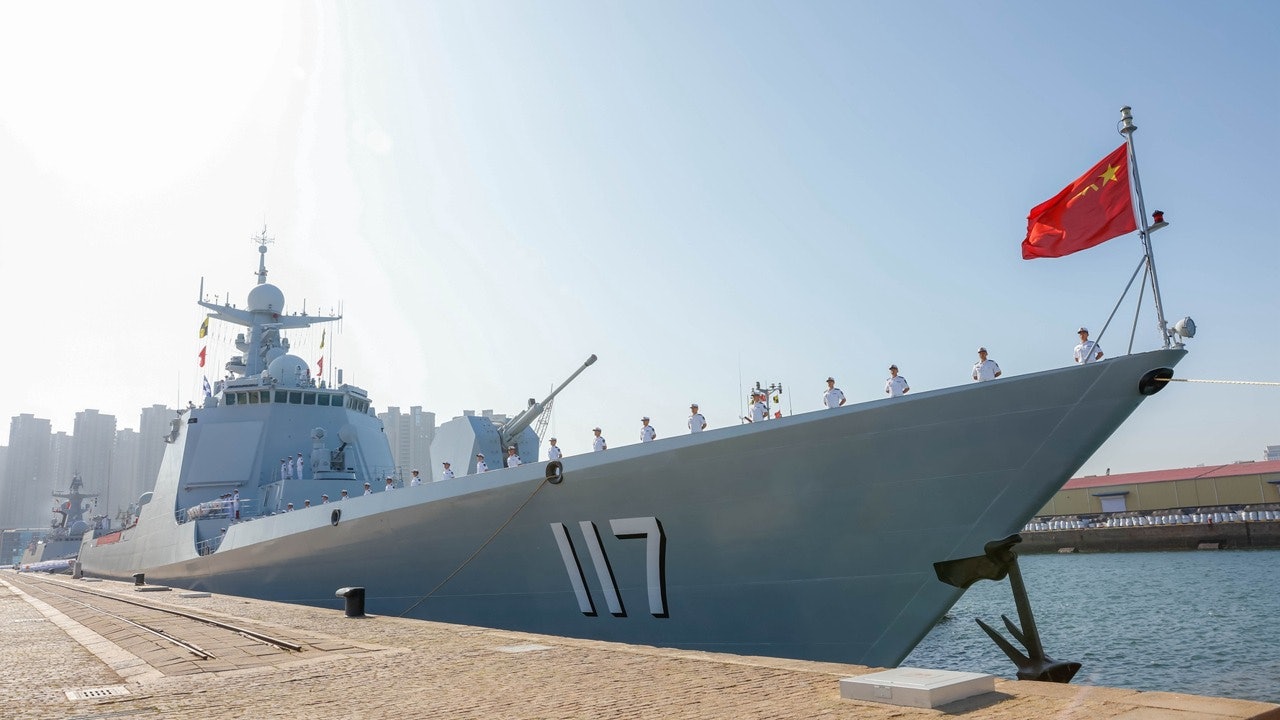Iranian military spokesman Abolfazl Shekarchi has released a news conference on December 25, revealing that the Chinese, Russian and Iranian fleets will converge in the northern Indian Ocean on the 27th and penetrate the Strait of Hormuz. A four-day joint military exercise was held in the waters of the Persian Gulf in the east. By the 26th, the Chinese Ministry of National Defense had also confirmed the intelligence of participating ships and exercise waters.
At this point, Iran has become a reality from the “Persian Gulf military exercise” promoted in late July, and the participating forces have also changed from the former Russian and Iranian armies into a three-nation joint fleet.
At present, according to various information previously disclosed by the Chinese military, the warships dispatched by China on December 27 belong to the “33rd batch of escort formations of the Chinese Navy” currently performing tasks in this area, and the Chinese Navy dispatched on the 23rd “Thirty-fourth escort formations”, by January 2020, there will be two Chinese fleets in the Indian Ocean.
Judging from the situation of the Chinese fleet in recent months, whether it is the 33rd batch of escort formations or the 34th batch of escort formations that will arrive in 2020, they have been carrying “escorts” And exercise tasks. “
In November, the 33rd batch of escort formations sent the “Weifang” guided missile frigate to operate independently. The ship then went to the Atlantic waters west of South Africa to participate in the joint maritime military exercises of China, Russia and South Africa. After completing the exercise mission on November 28, the ship cruised northward and returned to the Djibouti anchorage after stopping in East Africa and Kenya.
By December 23, the formation sent the Xining guided missile destroyer, which entered the cruise for the first time, into the Indian Ocean and merged north with the Russian and Iranian exercise fleets. As the 34th batch of escort formations have also traveled along Hainan, South China, and may participate in the joint maritime military exercise between China and Pakistan in January, the status of the Chinese fleet active in the three oceans is becoming clearer.
Of course, the total strength of the two Chinese fleets is ultimately limited. They only include two destroyers, two frigates and two logistics supply ships. This is not the highest peak of the Chinese fleet in the Indian Ocean. The peak occurred in mid-February 2018.
Data show that the three sub-fleets, including the naval offshore training formation in the southern theater of the Chinese Navy and the 27th and 28th escort formations, were simultaneously operating in the waters. The total strength of the Chinese Navy, including three destroyers, four frigates, one landing ship, and three supply ships, has reached one third of the Indian Navy’s same-type ships and about half of its tonnage. The presence of the Chinese fleet in the Indian Ocean has gradually become the norm.
Since the United Nations authorized countries to cruise the Gulf of Aden from December 2008, the fleets of various countries have been actively seeking a place in the Indian Ocean. This water also has its own order: there are international anti-piracy cruises in the Arabian Sea region, and the American Garrison’s base in Diego Garcia in the South Indian Ocean. Every move of the Indian Ocean hot spot is also in the eyes of the international community.
Considering that the Chinese fleet has also held joint exercises with the United States, Saudi Arabia and other countries not long ago, and the purpose of the Chinese fleet in the Atlantic, Indian Ocean and the Pacific has been quite cautious. This means that Beijing’s independent and peaceful actions in the Indian Ocean deserve to be re-sentenced by the West.












